Abstract
1. Nerve impulses were recorded from afferents from non-contracting spindles from the isolated extensor longus dig. IV muscle of the frog during small sinusoidal changes in muscle length at frequencies from 0·001 to 100 Hz. A computer of average transients was used to average the spike distribution during a number of cycles, and hence to determine the spindle response in impulses/sec at different phases of the cycle.
2. At any one frequency the response could be described by a sinusoid, whose amplitude was approximately proportional to the amplitude of the stretch and whose phase was approximately constant, together with a non-linearity dependent principally upon non-linearities in the static response.
3. The frequency response was estimated from the sinusoid responses. In conventional terms, it consisted of a straight line of positive slope below 2 Hz and a maximum between 7 and 16 Hz.
4. The slope of the frequency response was dependent on the mean length of the preparation, typically varying from zero to about 0·5 (3 db/octave) over the physiological range of the passive muscle. The shape of the peak appeared to depend on the mean firing frequency.
5. The responses to ramp stretches of one second duration and up to 2 mm in amplitude were also measured. Responses predicted from the sinusoid measurements were the same shape as the measured responses, but were larger by a factor of about 1·4.
6. The shapes of both the frequency responses and the responses to ramps were hardly affected by an operation that removed most of the polar parts of the spindles.
7. The results are discussed in terms of internal spindle mechanisms.
Full text
PDF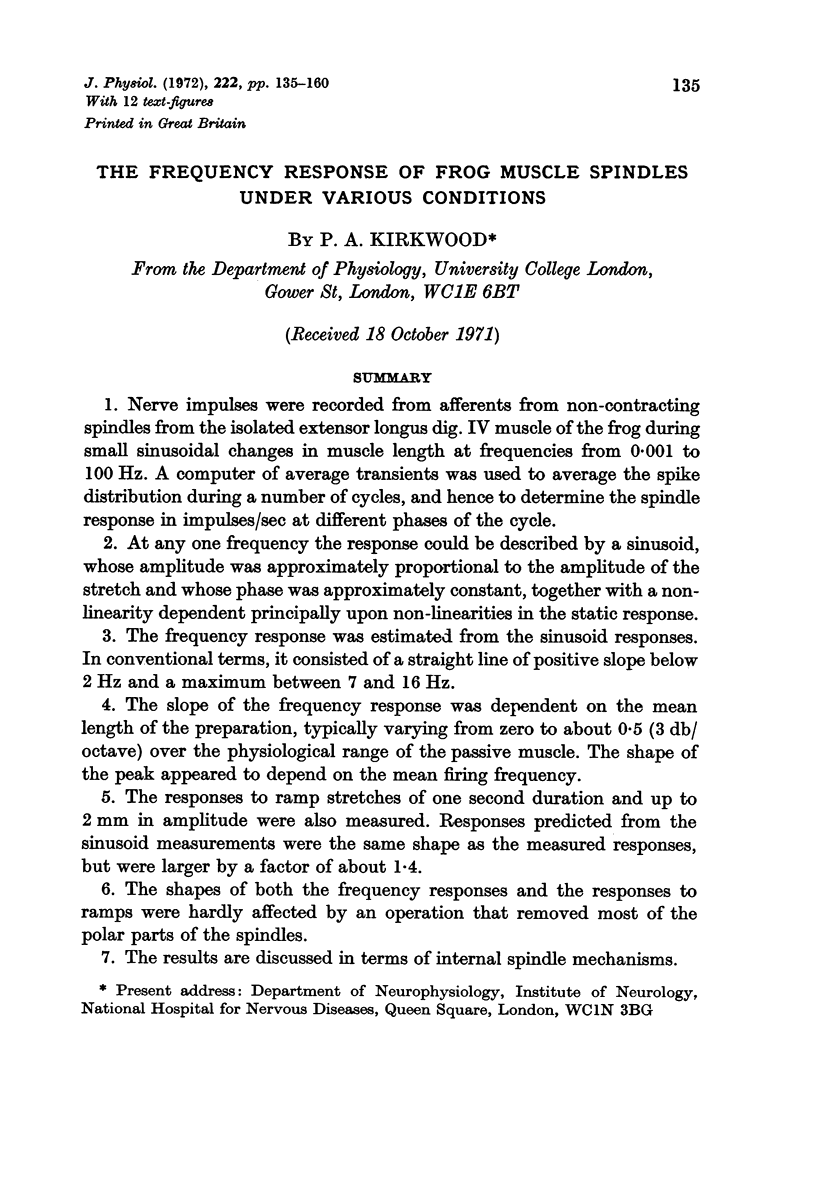
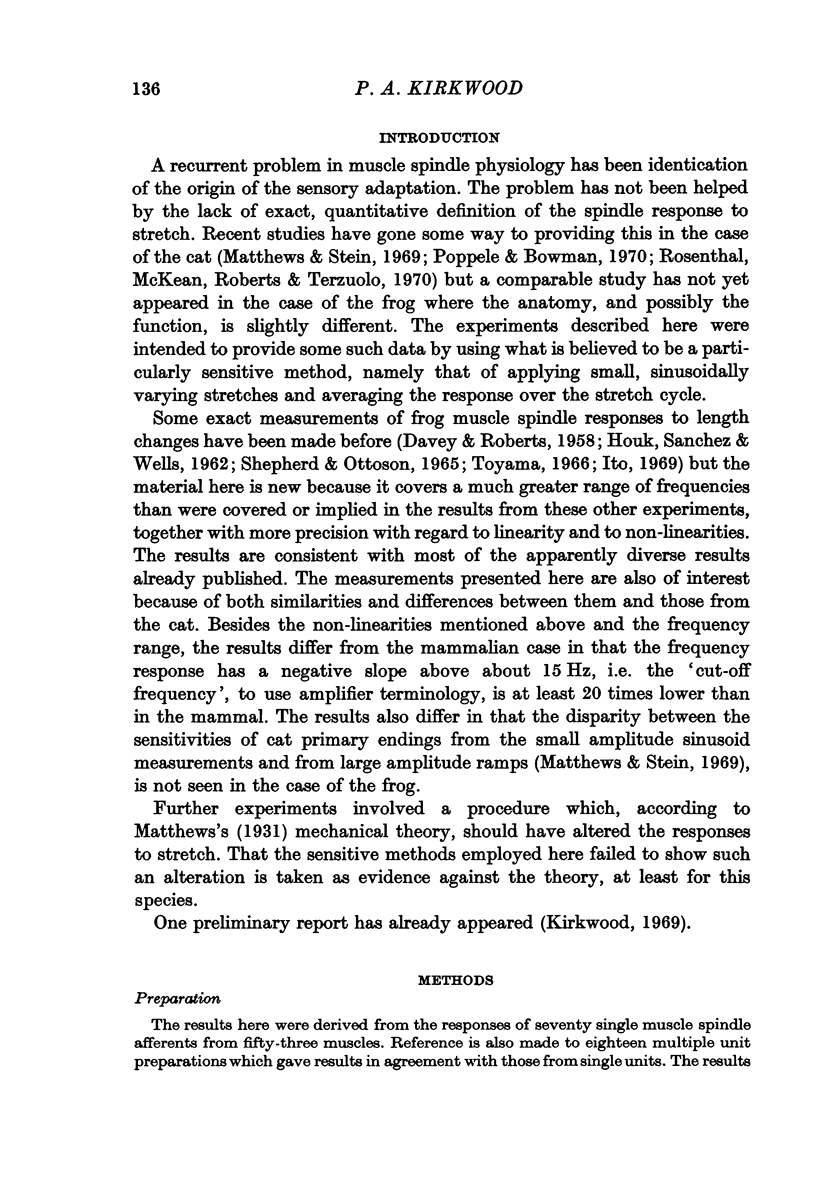
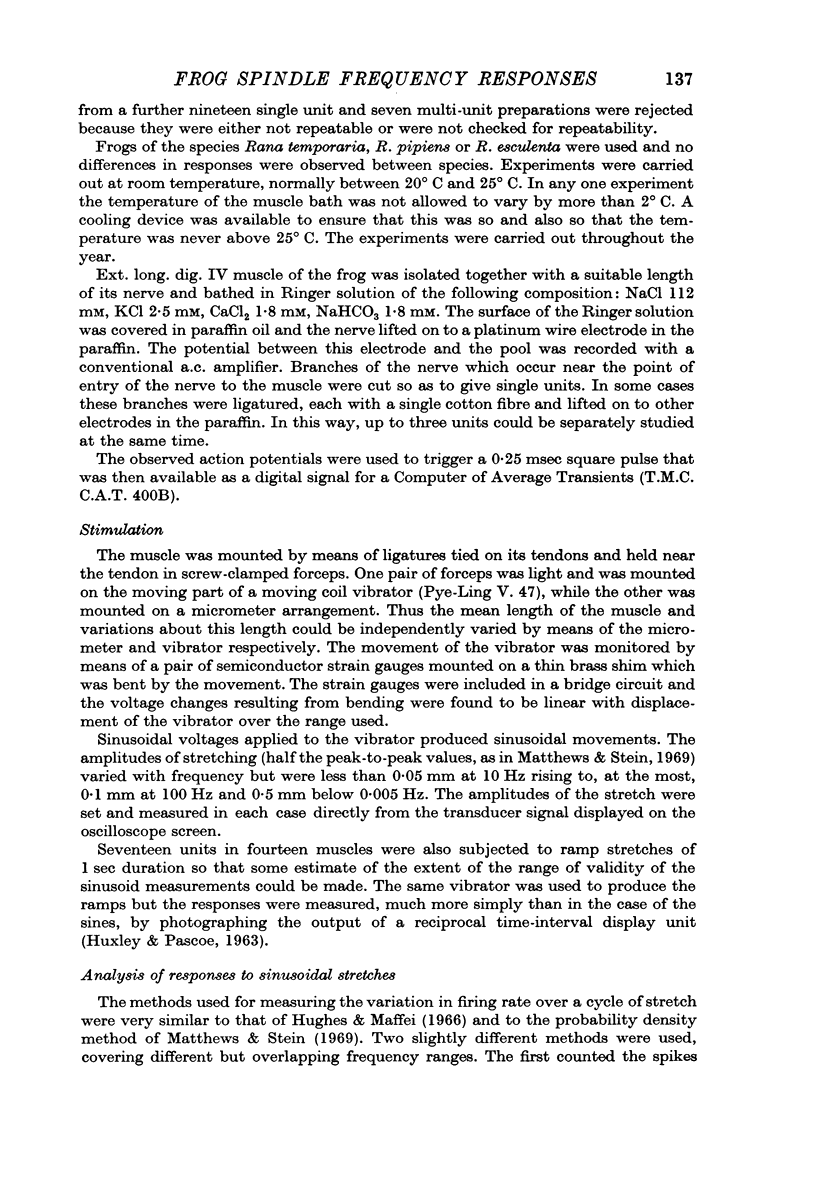
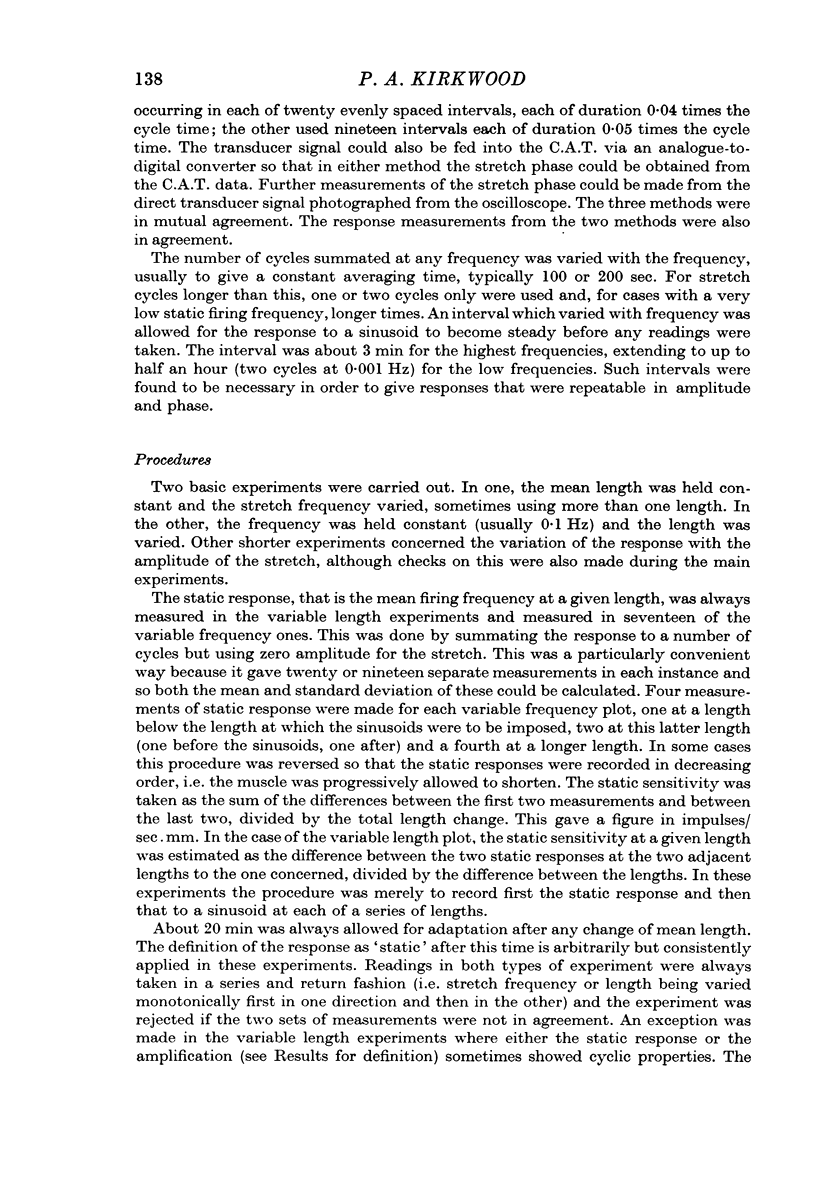
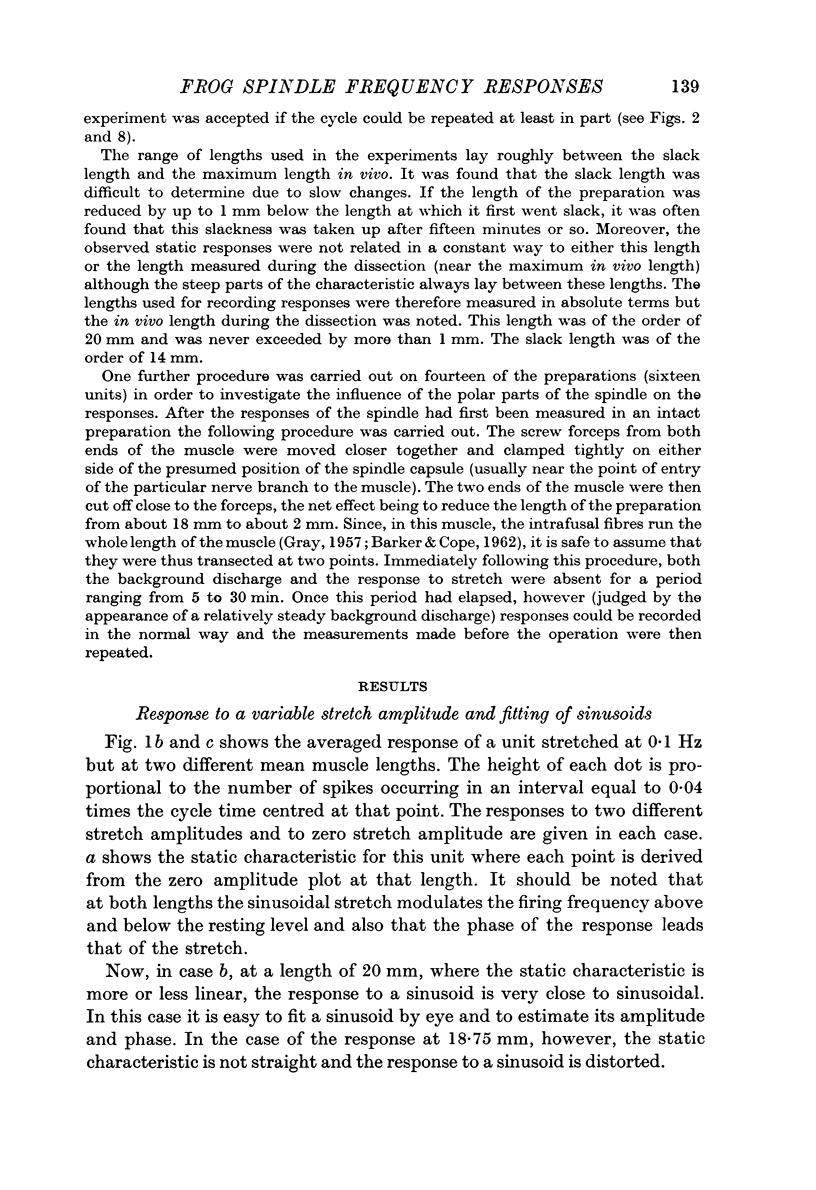
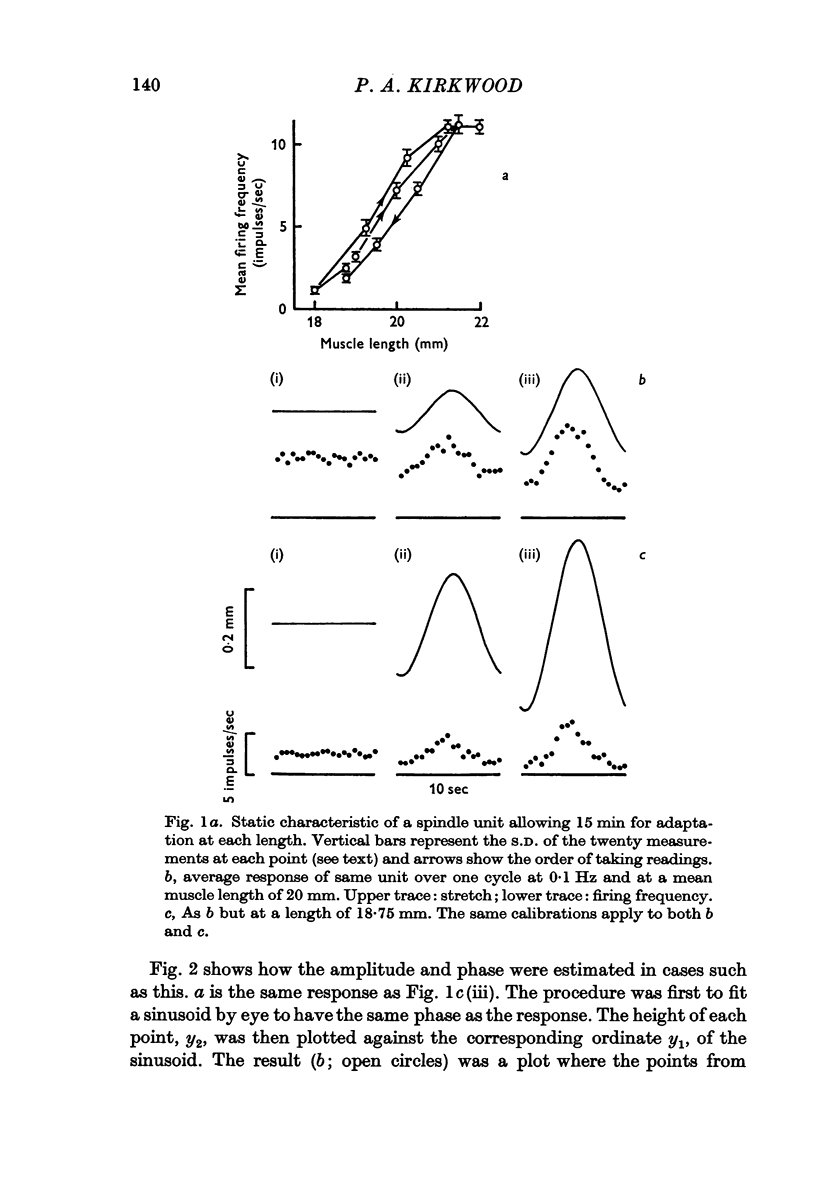
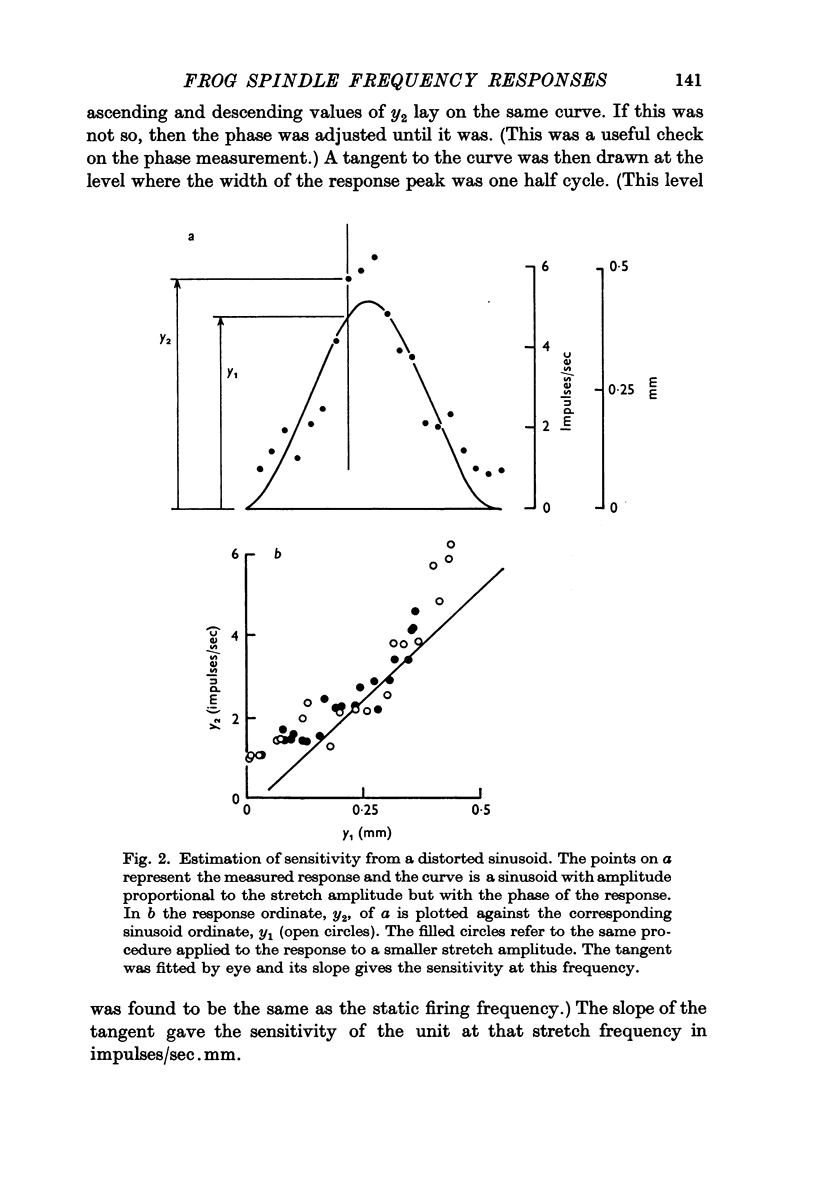

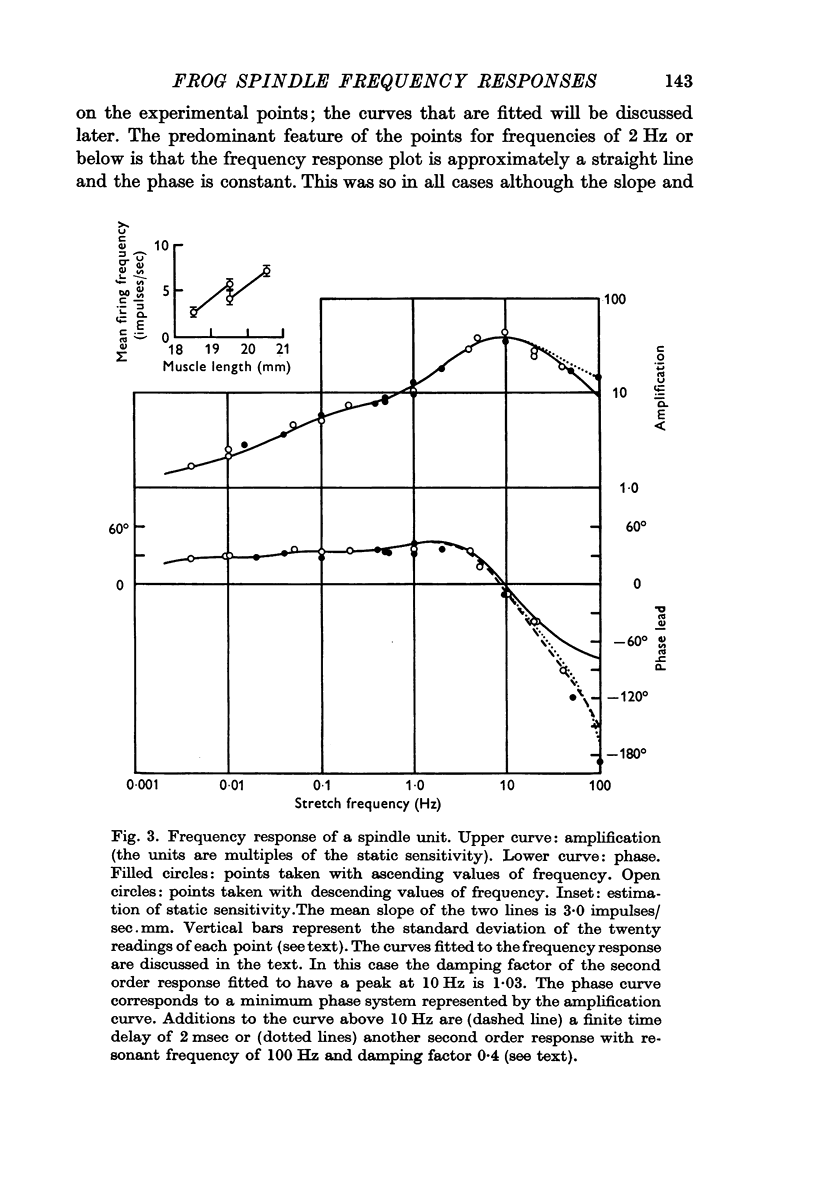
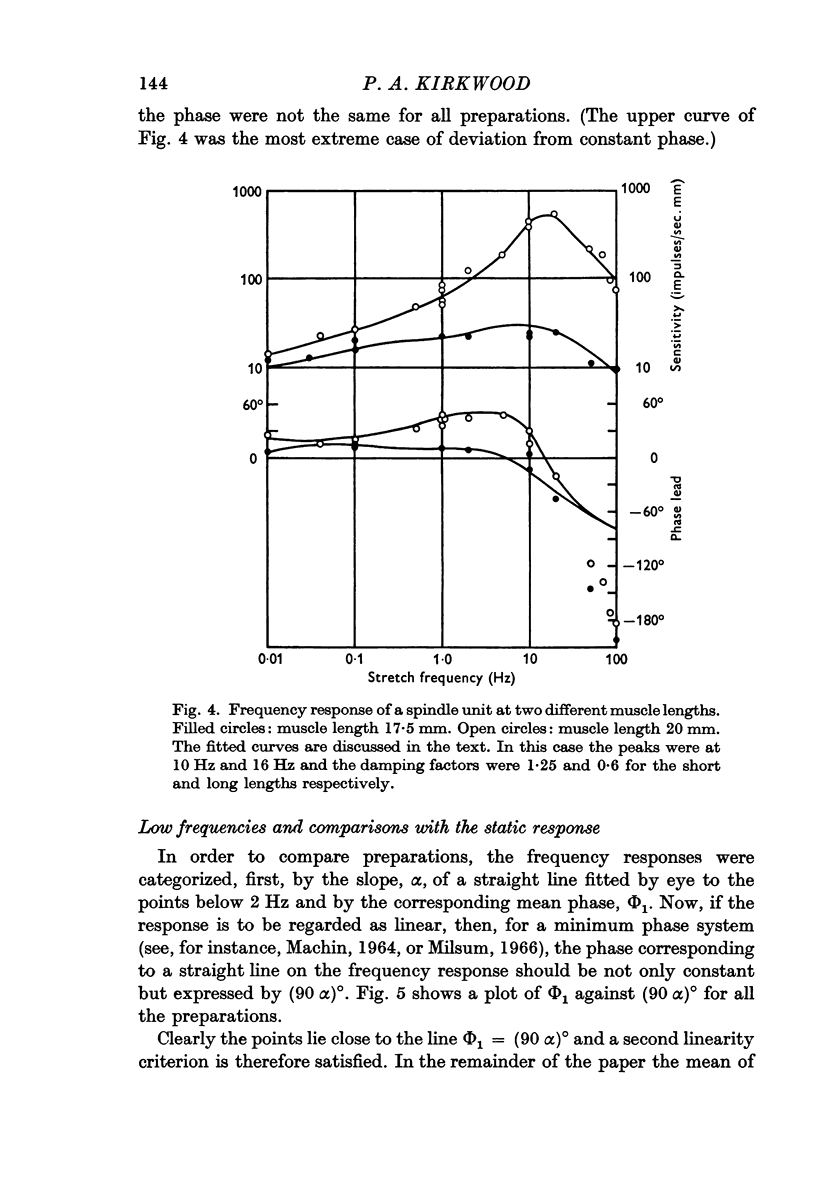
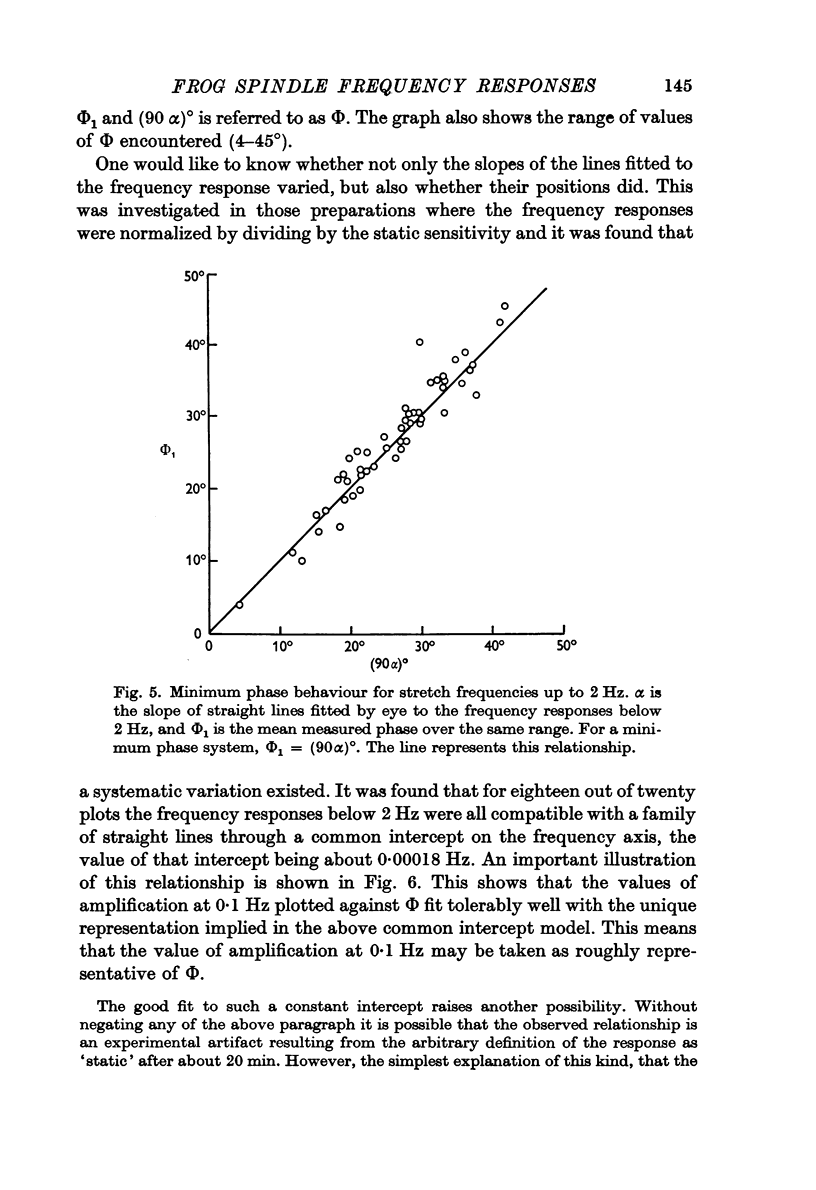
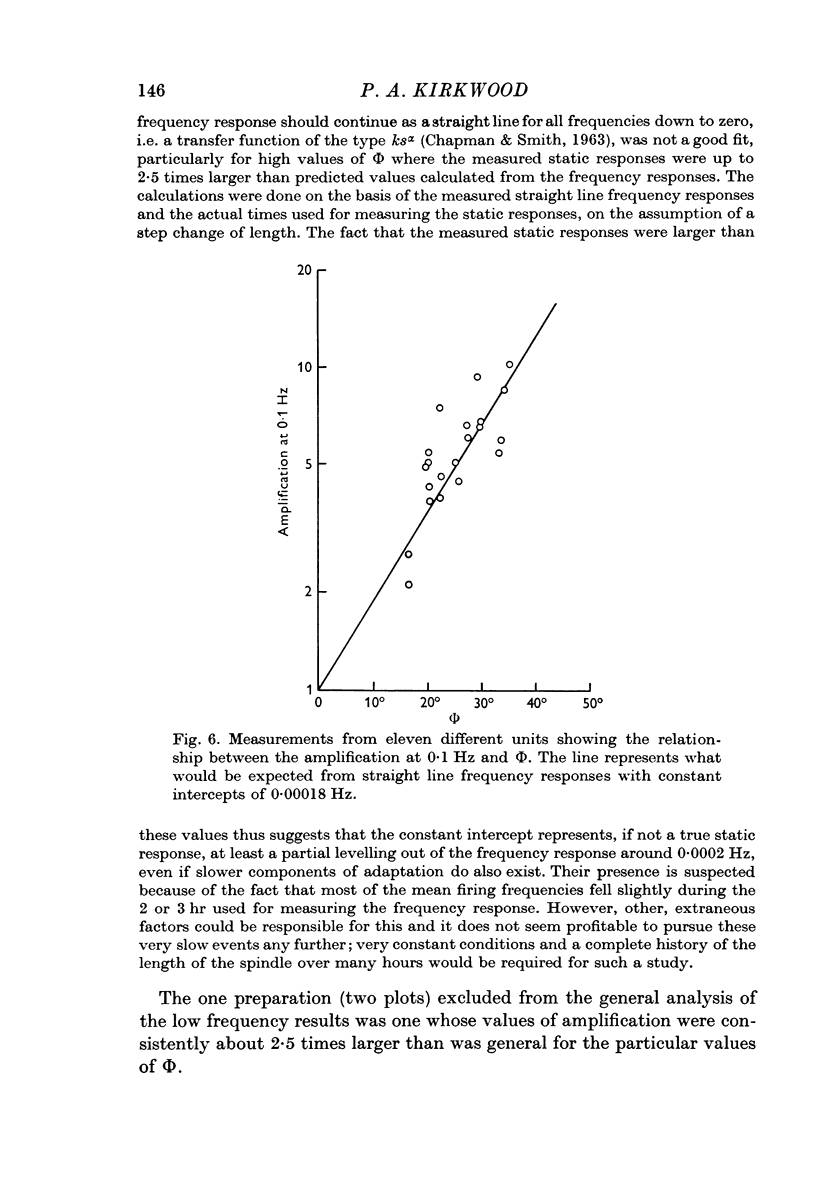

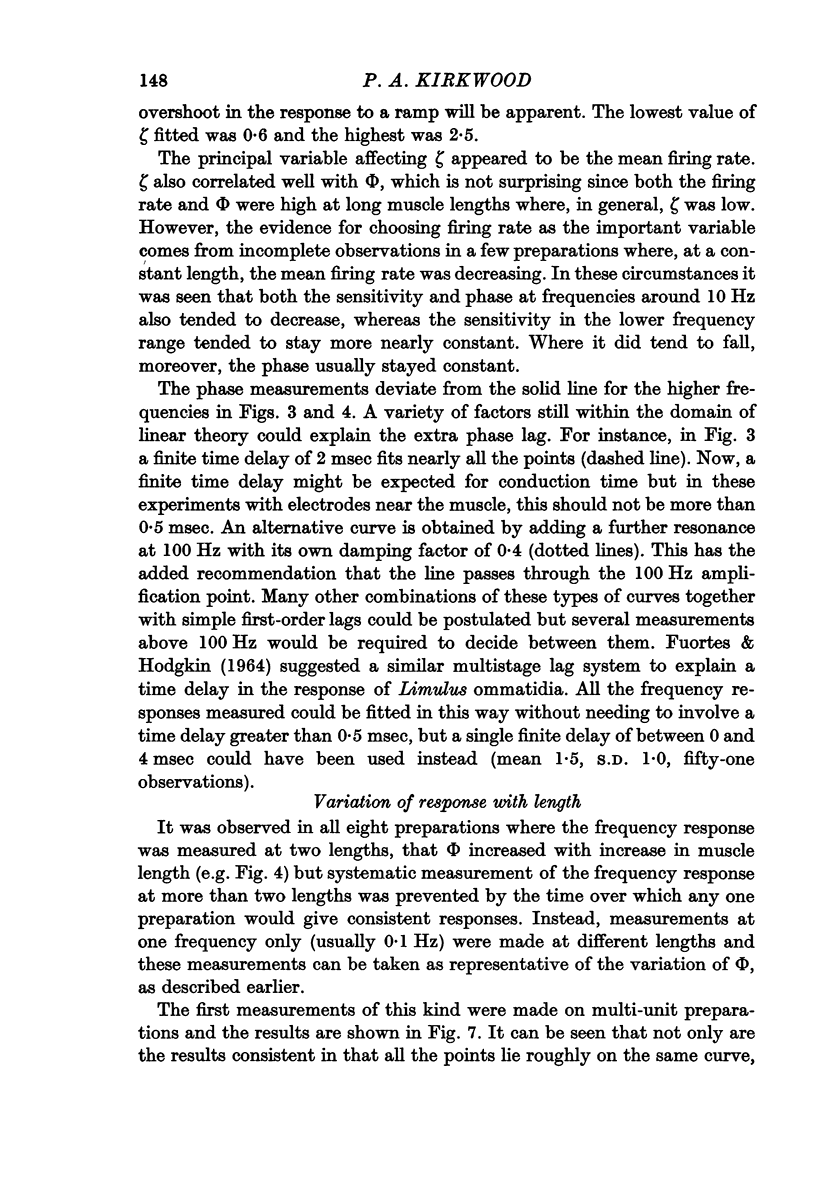
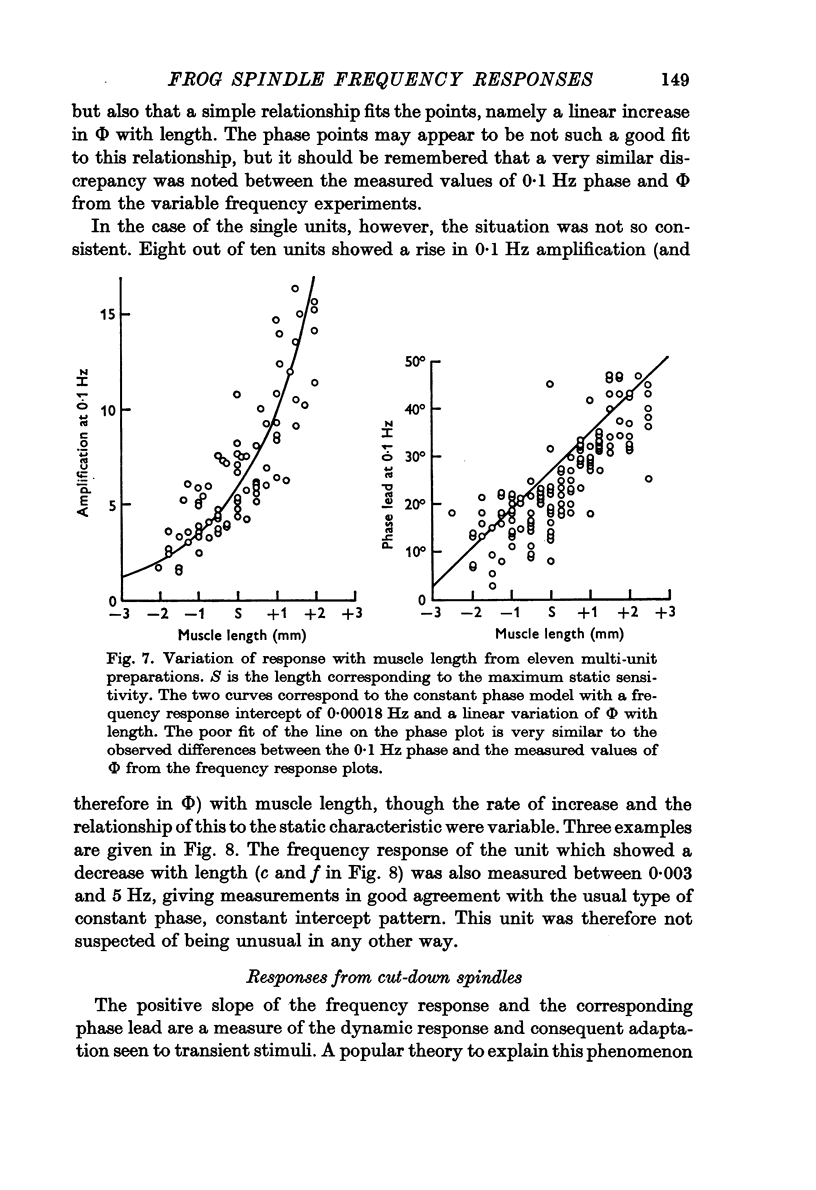
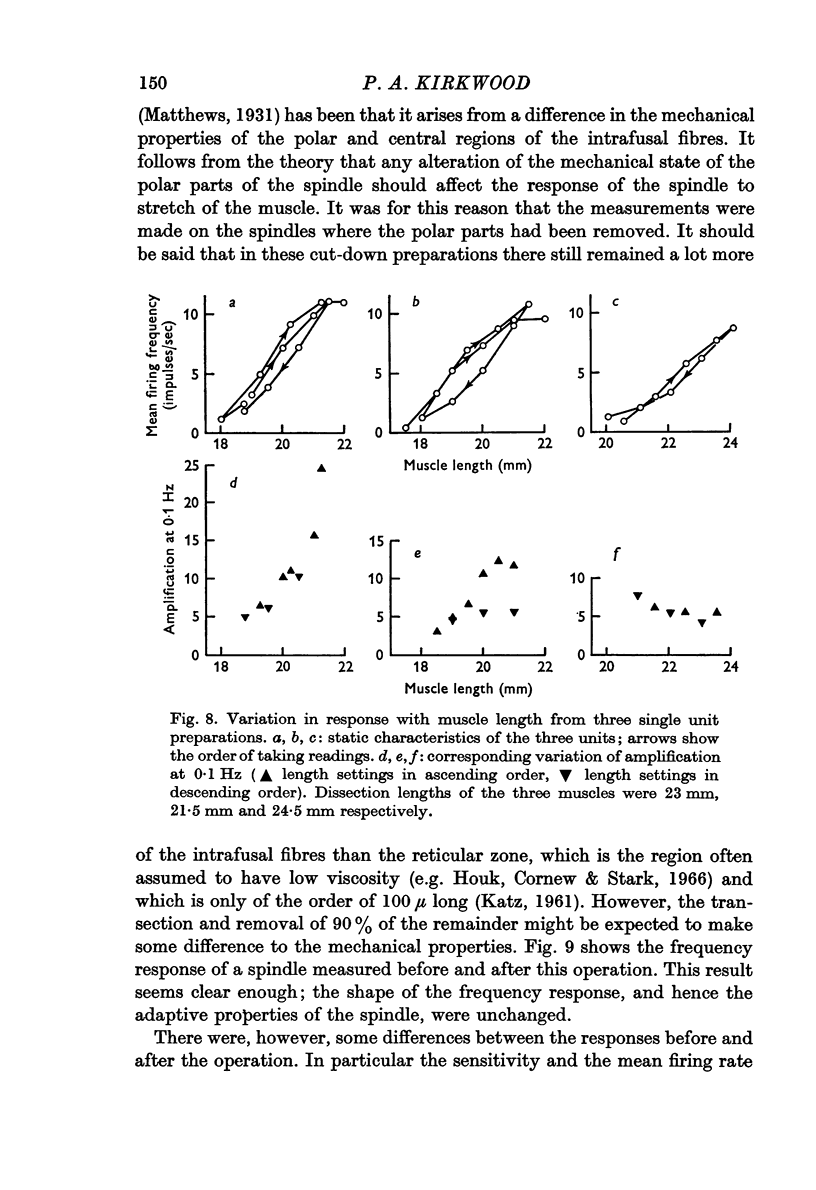
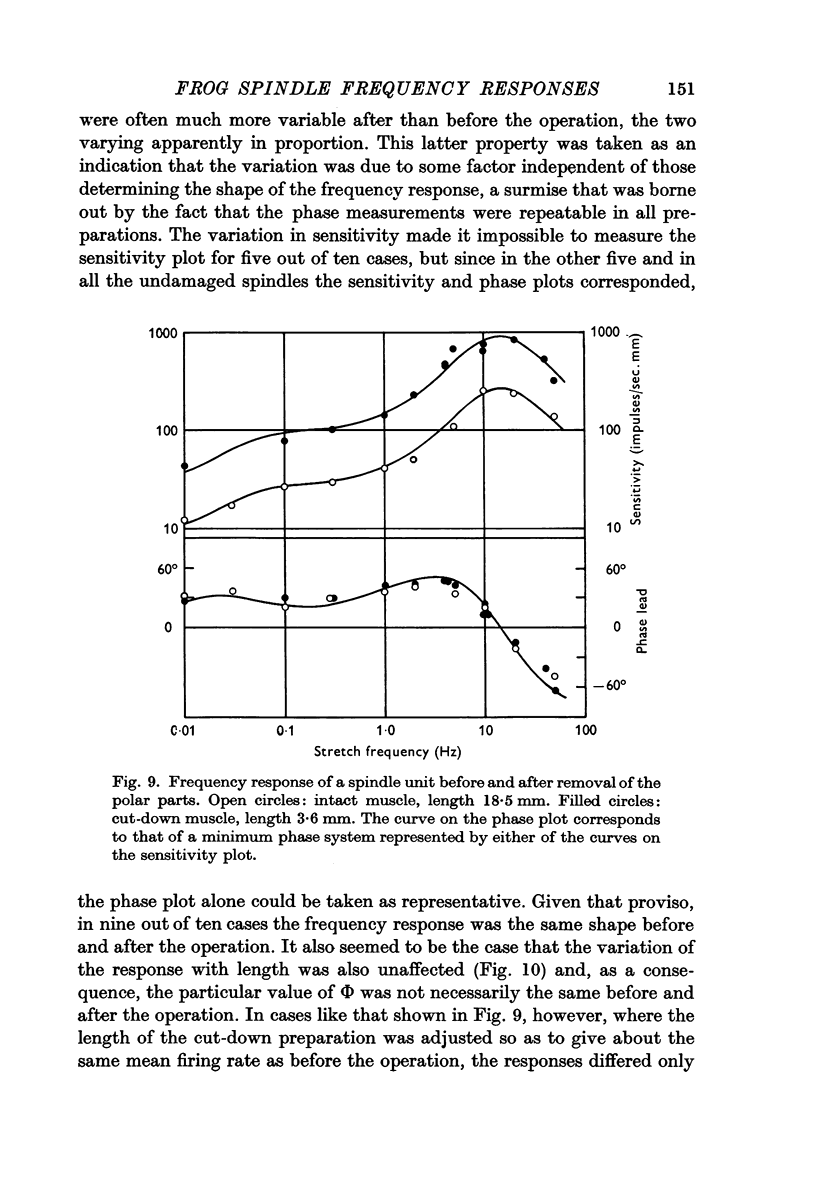
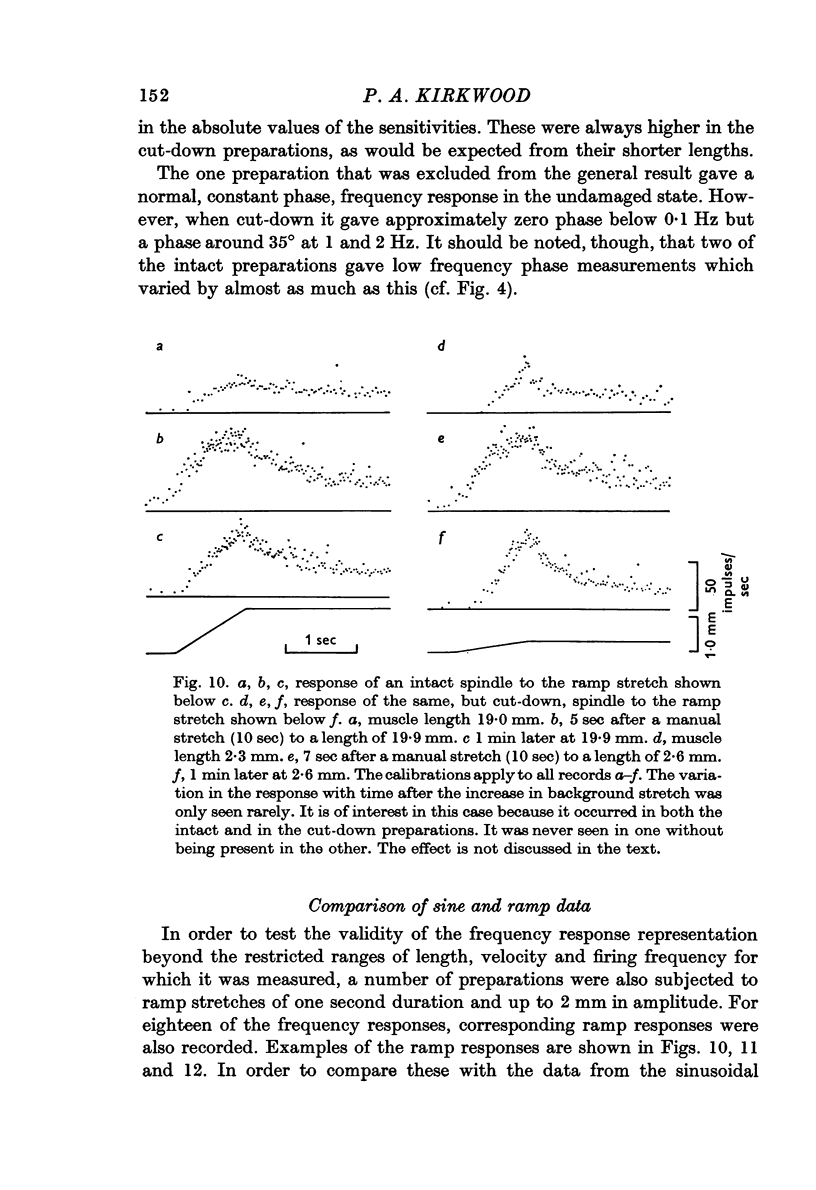
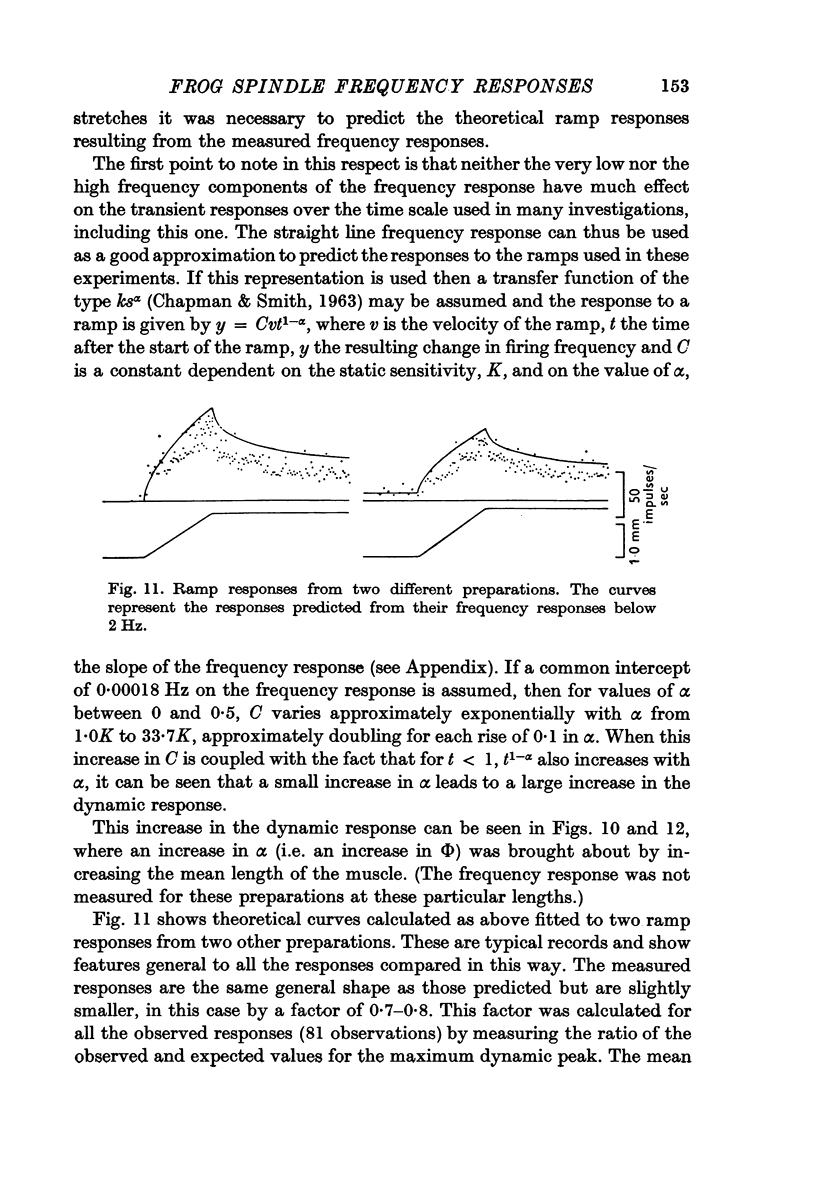
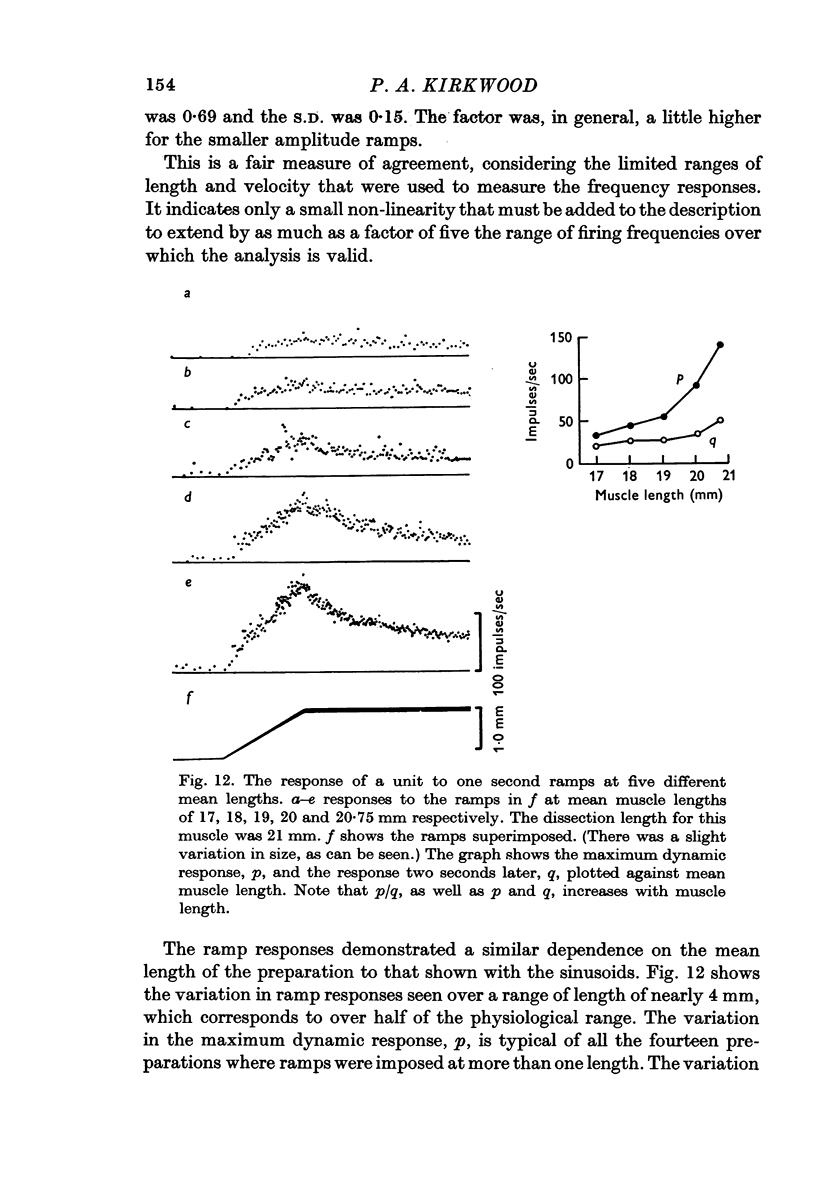
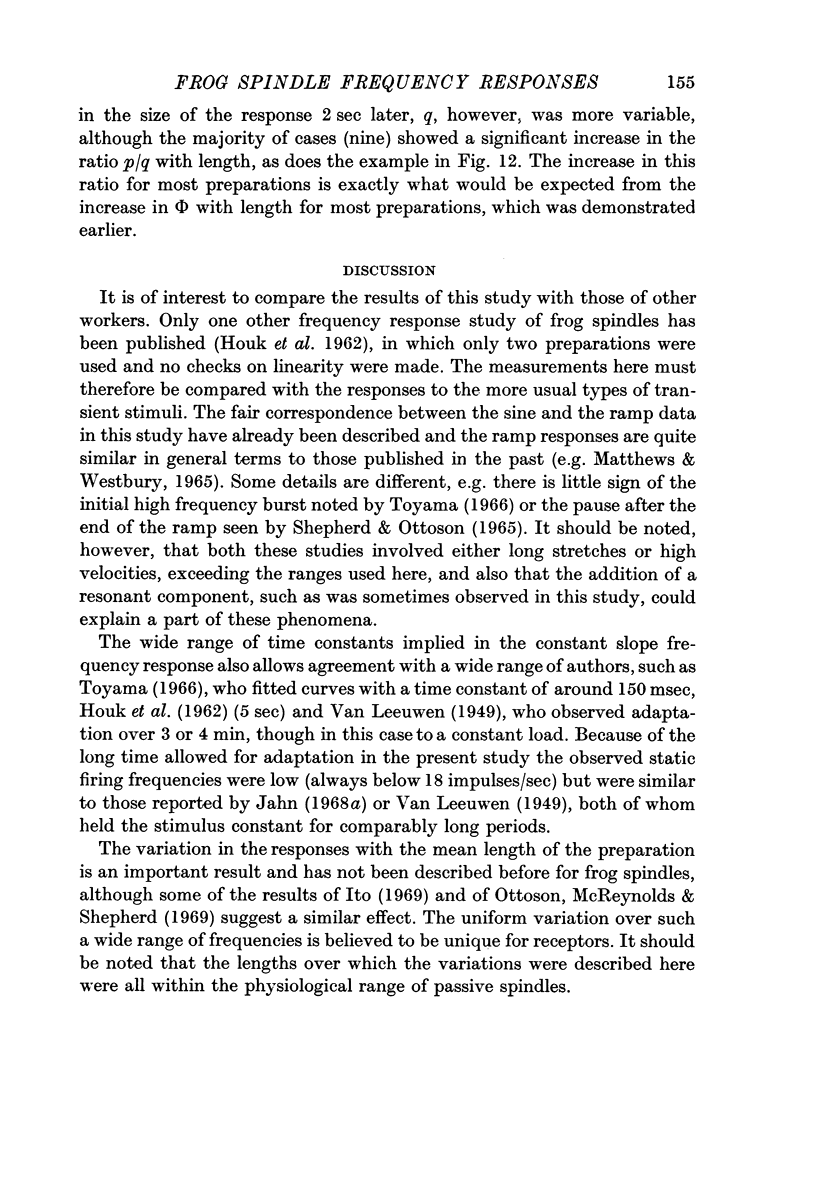
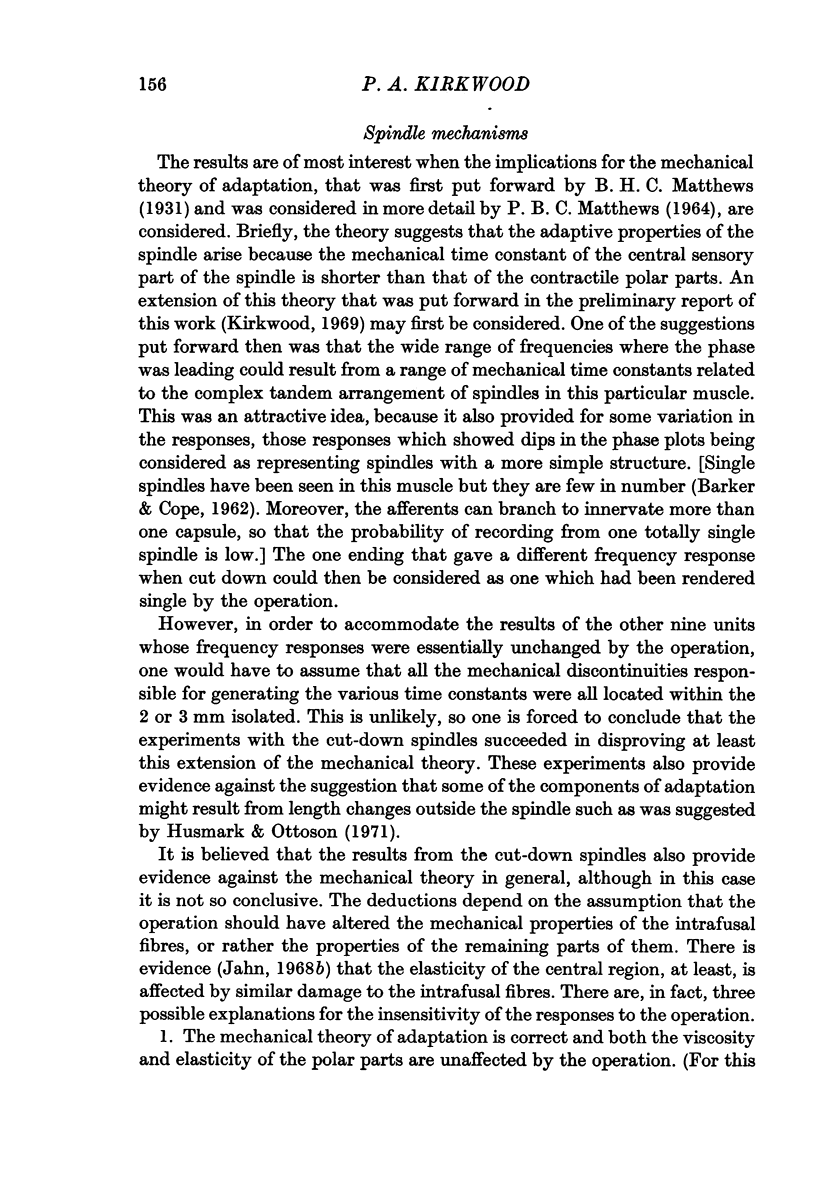
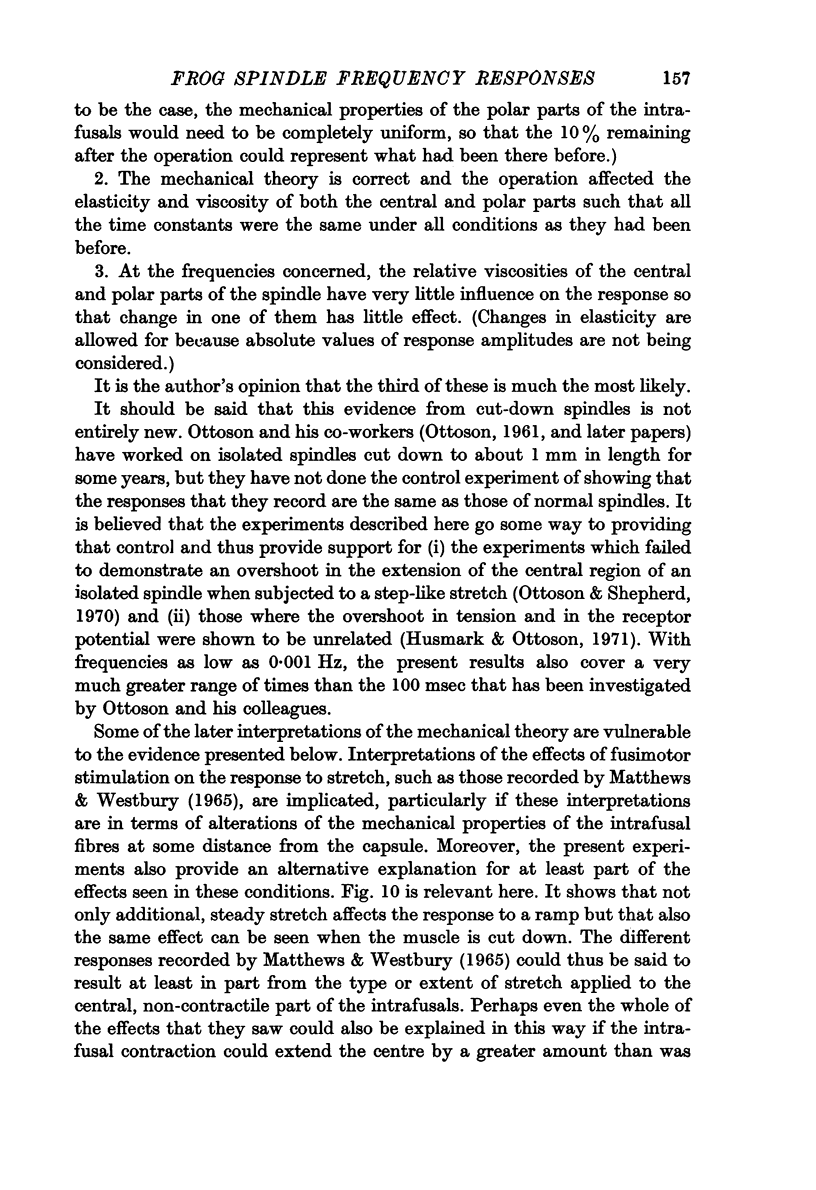
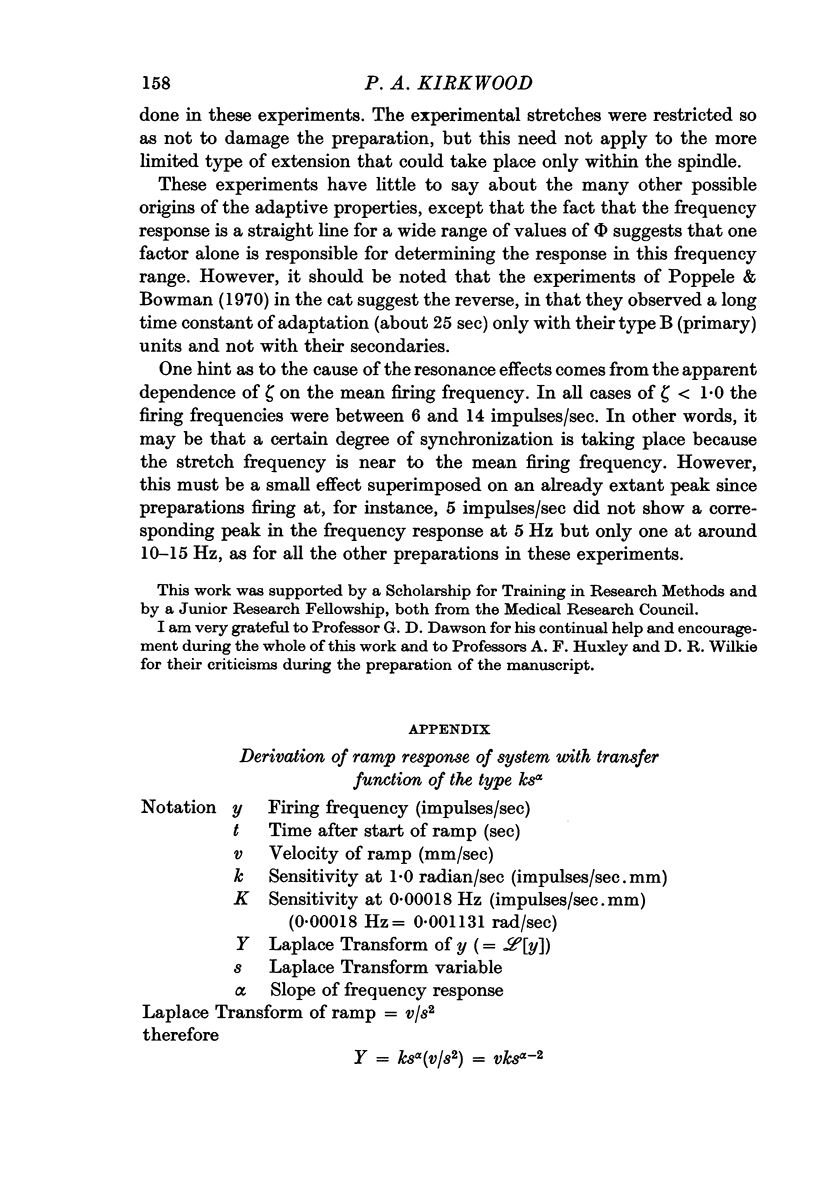
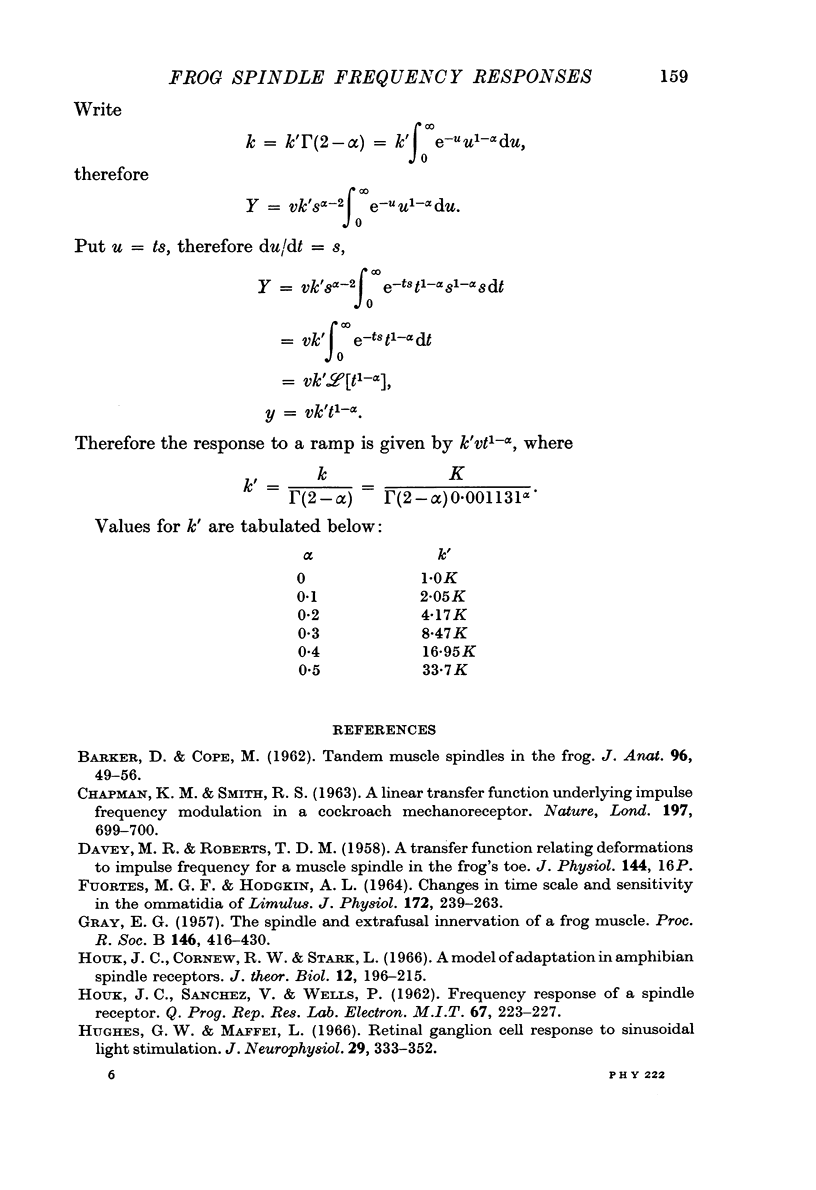
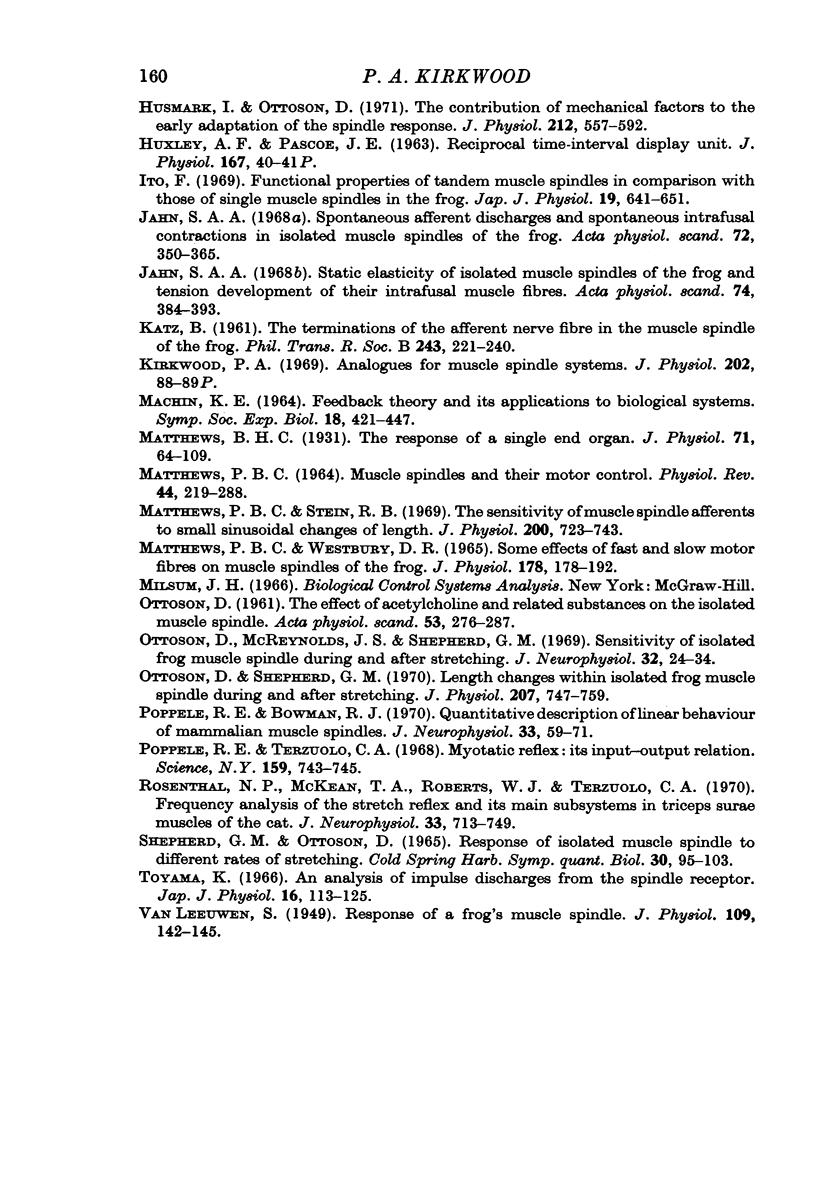
Selected References
These references are in PubMed. This may not be the complete list of references from this article.
- Barker D., Cope M. Tandem muscle-spindles in the frog. J Anat. 1962 Jan;96(Pt 1):49–57. [PMC free article] [PubMed] [Google Scholar]
- FUORTES M. G., HODGKIN A. L. CHANGES IN TIME SCALE AND SENSITIVITY IN THE OMMATIDIA OF LIMULUS. J Physiol. 1964 Aug;172:239–263. doi: 10.1113/jphysiol.1964.sp007415. [DOI] [PMC free article] [PubMed] [Google Scholar]
- GRAY E. G. The spindle and extrafusal innervation of a frog muscle. Proc R Soc Lond B Biol Sci. 1957 May 7;146(924):416–430. doi: 10.1098/rspb.1957.0021. [DOI] [PubMed] [Google Scholar]
- Houk J. C., Cornew R. W., Stark L. A model of adaptation in amphibian spindle receptors. J Theor Biol. 1966 Nov;12(2):196–215. doi: 10.1016/0022-5193(66)90113-5. [DOI] [PubMed] [Google Scholar]
- Hughes G. W., Maffei L. Retinal ganglion cell response to sinusoidal light stimulation. J Neurophysiol. 1966 May;29(3):333–352. doi: 10.1152/jn.1966.29.3.333. [DOI] [PubMed] [Google Scholar]
- Husmark I., Ottoson D. The contribution of mechanical factors to the early adaptation of the spindle response. J Physiol. 1971 Feb;212(3):577–592. doi: 10.1113/jphysiol.1971.sp009343. [DOI] [PMC free article] [PubMed] [Google Scholar]
- Ito F. Functional properties of tandem muscle spindles in comparison with those of single muscle spindles in the frog. Jpn J Physiol. 1969 Oct 15;19(5):641–651. doi: 10.2170/jjphysiol.19.641. [DOI] [PubMed] [Google Scholar]
- Jahn S. A. Spontaneous afferent discharges and spontaneous intrafusal contractions in isolated muscle spindles of the frog. Acta Physiol Scand. 1968 Mar;72(3):350–365. doi: 10.1111/j.1748-1716.1968.tb03857.x. [DOI] [PubMed] [Google Scholar]
- Jahn S. A. Static elasticity of isolated muscle spindles of the frog and tension development of their intrafusal muscle fibres. Acta Physiol Scand. 1968 Nov;74(3):384–393. doi: 10.1111/j.1748-1716.1968.tb04247.x. [DOI] [PubMed] [Google Scholar]
- Kirkwood P. A. Analogues for muscle spindle systems. J Physiol. 1969 Jun;202(2):88P–89P. [PubMed] [Google Scholar]
- MATTHEWS P. B. MUSCLE SPINDLES AND THEIR MOTOR CONTROL. Physiol Rev. 1964 Apr;44:219–288. doi: 10.1152/physrev.1964.44.2.219. [DOI] [PubMed] [Google Scholar]
- MATTHEWS P. B., WESTBURY D. R. SOME EFFECTS OF FAST AND SLOW MOTOR FIBRES ON MUSCLE SPINDLES OF THE FROG. J Physiol. 1965 May;178:178–192. doi: 10.1113/jphysiol.1965.sp007622. [DOI] [PMC free article] [PubMed] [Google Scholar]
- Machin K. E. Feedback theory and its application to biological systems. Symp Soc Exp Biol. 1964;18:421–445. [PubMed] [Google Scholar]
- Matthews B. H. The response of a single end organ. J Physiol. 1931 Jan 21;71(1):64–110. doi: 10.1113/jphysiol.1931.sp002718. [DOI] [PMC free article] [PubMed] [Google Scholar]
- Matthews P. B., Stein R. B. The sensitivity of muscle spindle afferents to small sinusoidal changes of length. J Physiol. 1969 Feb;200(3):723–743. doi: 10.1113/jphysiol.1969.sp008719. [DOI] [PMC free article] [PubMed] [Google Scholar]
- OTTOSON D. The effect of acetylcholine and related substances on the isolated muscle spindle. Acta Physiol Scand. 1961 Nov-Dec;53:276–287. doi: 10.1111/j.1748-1716.1961.tb02286.x. [DOI] [PubMed] [Google Scholar]
- Ottoson D., McReynolds J. S., Shepherd G. M. Sensitivity of isolated frog muscle spondle during and after stretching. J Neurophysiol. 1969 Jan;32(1):24–34. doi: 10.1152/jn.1969.32.1.24. [DOI] [PubMed] [Google Scholar]
- Ottoson D., Shepherd G. M. Length changes within isolated frog muscle spindle during and after stretching. J Physiol. 1970 May;207(3):747–759. doi: 10.1113/jphysiol.1970.sp009092. [DOI] [PMC free article] [PubMed] [Google Scholar]
- Poppele R. E., Bowman R. J. Quantitative description of linear behavior of mammalian muscle spindles. J Neurophysiol. 1970 Jan;33(1):59–72. doi: 10.1152/jn.1970.33.1.59. [DOI] [PubMed] [Google Scholar]
- Poppele R. E., Terzuolo C. A. Myotatic reflex: its input-output relation. Science. 1968 Feb 16;159(3816):743–745. doi: 10.1126/science.159.3816.743. [DOI] [PubMed] [Google Scholar]
- Rosenthal N. P., McKean T. A., Roberts W. J., Terzuolo C. A. Frequency analysis of stretch reflex and its main subsystems in triceps surae muscles of the cat. J Neurophysiol. 1970 Nov;33(6):713–749. doi: 10.1152/jn.1970.33.6.713. [DOI] [PubMed] [Google Scholar]
- Shepherd G. M., Ottoson D. Response of the isolated muscle spindle to different rates of stretching. Cold Spring Harb Symp Quant Biol. 1965;30:95–103. doi: 10.1101/sqb.1965.030.01.013. [DOI] [PubMed] [Google Scholar]
- Toyama K. An analysis of impulse discharges from the spindle receptor. Jpn J Physiol. 1966 Apr 15;16(2):113–125. doi: 10.2170/jjphysiol.16.113. [DOI] [PubMed] [Google Scholar]
- VAN LEEUWEN S. Response of a frog's muscle spindle. J Physiol. 1949 Aug;109(1-2):142–145. doi: 10.1113/jphysiol.1949.sp004378. [DOI] [PMC free article] [PubMed] [Google Scholar]


